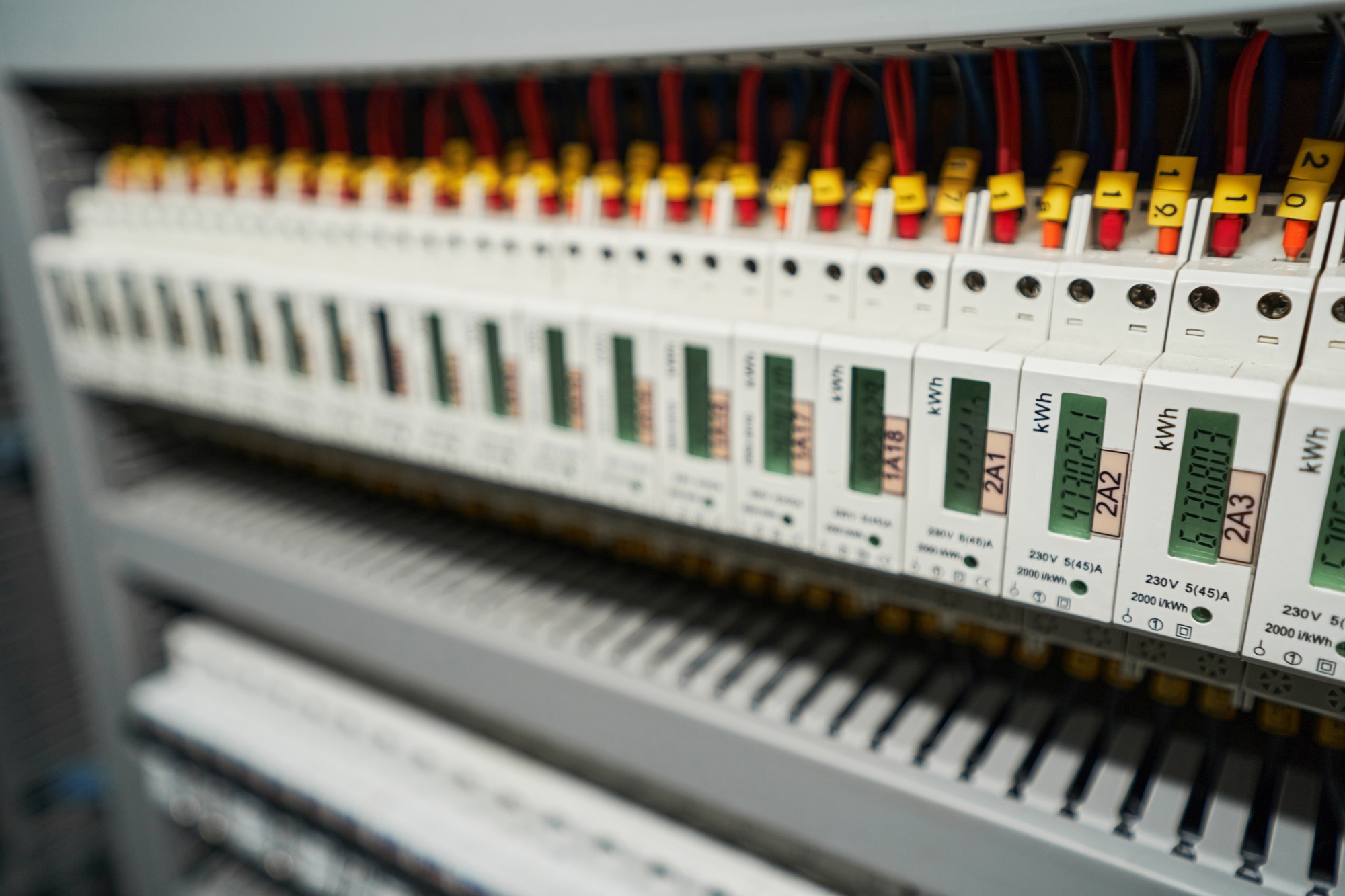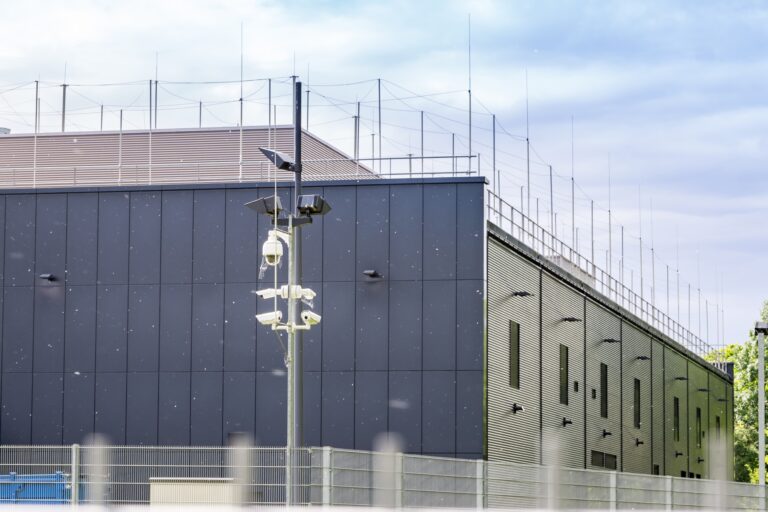When your facility’s electrical system starts aging, you face a big choice: retrofit the existing system or rebuild it entirely. This decision affects your costs, safety, and ability to grow in the future. Many industry experts note that upgrading aging systems can significantly improve energy efficiency and lower operating costs while still delivering the performance your facility needs. But retrofitting isn’t always the best option. Sometimes, a full rebuild provides better long-term value.
The Real Cost of Waiting
Delaying upgrades to an aging electrical system can increase risk and cost over time. When routine maintenance is postponed, small issues can turn into major failures that require expensive repairs and emergency service calls. Industry data shows that deferred maintenance can drive up maintenance expenses and create a higher volume of emergency repairs compared with proactive care, which in turn raises operating costs and downtime.
Old electrical components and outdated infrastructure also tend to use more energy than modern systems, quietly increasing energy costs year after year. Facilities that delay needed upgrades can also face greater safety risks, higher likelihood of code violations, and more frequent equipment breakdowns that interrupt operations and reduce productivity.
Understanding Your Options: Retrofit vs. Rebuild
What Is Electrical System Retrofitting?
Electrical system retrofitting means upgrading your existing system with modern parts while improving safety, efficiency, and performance while keeping the basic structure of the existing system. In practice, this involves replacing outdated wiring and circuit panels so they can handle today’s power demands safely and reliably. Many retrofits also include installing modern lighting, smarter control systems, and updated distribution equipment that uses energy more efficiently and meets current electrical codes. This type of upgrade helps bring older infrastructure into compliance with today’s standards, improves overall functionality, and can reduce operating costs without completely rebuilding the entire electrical system.
What Does Rebuilding Your Electrical System Mean?
Rebuilding your electrical system means starting completely fresh with a new setup designed for today’s needs and tomorrow’s growth. Instead of keeping the old wiring and panels, everything is taken out and replaced. The process includes designing a system from scratch to match your current load requirements, installing new main service and distribution equipment, and adding modern safety and backup systems that older systems may lack. A rebuilt electrical system also makes it easier to integrate new technology and gives you room to expand as your facility changes over time. This approach ensures your power infrastructure is up to modern standards, reliable, and ready for future demands.
Retrofit Electrical Systems: Key Benefits
Retrofitting offers compelling benefits for many commercial facilities, particularly when the existing infrastructure has good bones but needs modernization.
Cost-Effectiveness and Speed
Retrofitting older electrical systems is often less expensive and faster to install than a full rebuild, which can reduce disruption to daily operations and lower overall operating costs. According to the World Economic Forum’s Transforming Energy Demand report, retrofitting existing buildings could reduce energy intensity by almost 40 %, and coordinated demand‑side actions across buildings, industry, and transport could lower overall energy intensity by about 31 % without reducing economic output.
Reduced Operational Disruption
Modern retrofit techniques can often be done in phases or during off-hours, keeping operations running. Advanced planning and temporary power solutions ensure business continuity throughout the upgrade process.
Environmental Benefits
Retrofitting reuses parts of the existing system, which reduces waste compared to a full rebuild. Many organizations find that electrical retrofits help them meet corporate sustainability goals while improving operational efficiency.
Immediate Compliance and Safety Improvements
Retrofitting updates your system so it meets current National Electrical Code (NEC) standards. Modern parts include advanced safety features like arc fault protection and ground fault monitoring that weren’t available in older systems.
When to Rebuild an Electrical System
Even though retrofitting has many benefits, some situations make a full rebuild the smarter choice. Knowing these scenarios helps you make the best long-term decision.
System Capacity Limits
If your current electrical system doesn’t have enough capacity for current or planned operations, retrofitting may only provide a temporary solution. Facilities that are growing fast, adding energy-intensive equipment, or planning major expansions often need a complete rebuild.
Severe Safety or Code Issues
If your system has major safety risks or fails to meet code, rebuilding gives you a clean start. This is especially important in regulated industries where code compliance is required and non-negotiable.
Future-Proofing Requirements
Organizations planning significant technological upgrades, automation setups, or facility expansions may find that rebuilding can save money in the long run. A new system is built for future needs, so you won’t need big upgrades later.
Long-Term Costs Considerations
Rebuilding requires higher upfront investment. However, it can deliver better long-term costs over 20-30 years. A new system often runs more efficiently, needs fewer repairs, and provides better reliability than a retrofitted one.
Making the Decision: A Framework for Success
Assess Your Current System
Hire qualified professionals do a complete electrical system evaluation and check for:
- Overall system capacity and load needs
- Condition of major parts (panels, transformers, wiring)
- Code compliance and safety issues
- Power reliability
- Ability to support new technology
Evaluate Your Business Requirements
Consider both current needs and future plans:
- Expected facility growth or changes
- New equipment or technology upgrades
- Rules you must follow and meeting code needs
- Budget and financing options
- Acceptable downtime windows for setup
Compare Long-Term Costs
Calculate the long-term costs and savings of both options:
- Initial investment
- Projected energy savings and reduced operating costs
- Maintenance and repair cost differences
- Expected system lifespan and replacement cycles
- Potential productivity gains and risk reductions
Industry Best Practices and Expert Insights
According to the International Energy Agency, deep energy retrofits can cut energy demand by two-thirds or more in older buildings. However, the key is matching the solution to your specific situation.
An expert engineer from the Institute of Electrical and Electronics Engineers (IEEE) explained that the choice depends on looking at your current system, your future needs, and the long-term costs. Every facility is different, so there isn’t one right answer for everyone.
Our experience working with major clients like Disney, Nike, and City of Hope Hospital has shown that the most successful projects begin with thorough planning and realistic assessment of both current conditions and future needs.
What to Plan Before Starting
Planning and Project Management
Regardless of whether you choose retrofitting or rebuilding, success depends on careful planning and experienced project management. Start by laying out a detailed timeline and backup plans so you can stay on schedule and avoid surprises. Coordinate the work with your facility’s daily operations so upgrades do not shut down critical areas, and think ahead about temporary power needs so essential systems keep running during the project. It is also important to get the right permits and schedule inspections early with your local building authority, since reviews and approvals affect your timeline. Training staff on new systems before they go live helps ensure a smooth transition after work is finished. Taking time to plan thoroughly helps you stay on budget and avoid unnecessary delays.
Choosing the Right Partner
Selecting the right electrical contractor is another key part of planning. Look for a contractor with relevant experience and the proper licensing and insurance to do commercial or industrial work in your area. A good partner will have a strong track record on similar projects and can help guide you through permits and code requirements. Contractors familiar with your industry and its standards can provide clearer timelines, better cost estimates, and more reliable results. Open communication with your contractor also helps keep the project running smoothly and reduces the chance of unexpected problems.
Making Your Decision: Retrofit vs Rebuild Electrical System
The choice between retrofitting and rebuilding is not only about costs. It’s about making sure your facility works well now and in the future. Retrofitting offers faster setup and lower upfront costs, making it ideal for systems with good foundational infrastructure that need modernization. Rebuilding provides a clean slate for facilities with fundamental limitations or extensive future requirements.
Consider retrofitting when:
- Your existing system has enough capacity
- Budget constraints require lower upfront costs
- Minimal operational disruption is critical
- The system needs modernization but has good foundational elements
Choose rebuilding when:
- Current capacity is insufficient for your needs
- Extensive safety or code issues exist
- Significant future growth or changes are planned
- Long-term costs favors replacement
Take Action: Secure Your Facility’s Future
Don’t let an aging electrical system risk your operations, safety, or profitability. The longer you wait, the more expensive and disruptive the eventual solution becomes.
At Camali Corp, we’ve helped organizations across industries make this critical decision and implement solutions that deliver lasting value. Our complete approach includes detailed system assessment, cost-benefit analysis, and expert setup, whether you need retrofitting or complete rebuilding.
Ready to evaluate your electrical system? Contact our team of licensed electrical engineers for a complete assessment. We’ll help you understand your options, calculate the true costs and benefits, and develop a solution that meets your specific needs and budget.
Schedule your consultation today or call us at 949-580-0250. With over 35 years of experience in critical infrastructure, we’re the partner you can trust to get it right the first time.



